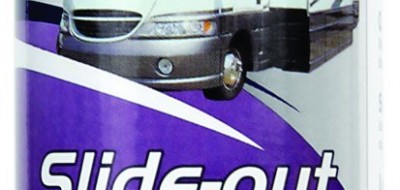In the past there was little choice – all most of us could afford is half frame or APS sized sensors in our DSLR cameras. Although the APS sensor is a big improvement over the sensors found in most point & shoot cameras, they still present some limitations. DSLRs with full sized sensors (sensors that are about the same size as 35mm film) are still not inexpensive, but the price of cameras utilizing them has dramatically decreased.
This chart shows the relative sizes of typical sensors. Many cell phones use sensors smaller than the 1/1.7″ shown here, and most point & shoot use a 1/1.8″. Tha advantage of the smaller sensor is lower cost for the manufacturer, smaller lenses, shorter distance between the lens & the sensor, and a smaller overall camera size. The disadvantage is limited resolution & increased noise.
The step between the point & shoot 1/1.8″ sensor & the APS size is major, although if all you plan to do with the images is produce web pages & 4″X6″ prints, you won’t see many advantages from the larger sensor. There are, of course, other advantages of a DSLR over a point & shoot – check my previous article “Point & Shoot or DSLR?” for some help in deciding between the two.
If you decide that a DSLR is in your future, there are limited sensor sizes to choose from. Although there are minor differences between the standard sizes offered by the major manufacturers, generally, the choice is between a APS sized sensor or one that is roughly the same size as 35mm film. Of course if you have a serious case of sensor envy, have $28,000.00 kicking around, and don’t mind working with a larger, heavier medium format camera, the Hasselblad H3DII with a 36 x 48.0 mm 50 Megapixel sensor would do the trick! For the rest of us, it is worth looking at the differences between a APS & full sized sensor.
The first consideration is cost. Although the price of cameras with full sized sensors has dropped from the $5,000 – $10,000 range, they are still quite a bit more than those available with APS sensors. Using the Nikon line to compare, the top of the line APS camera is currently the D300 which has a current street price of around $1600.00 (without lens). The D700 is Nikon’s entry level full sized sensor camera, with a street price of around $2500.00, again, without a lens. What do you get for the $900.00 difference?
- Lower noise. This is one of the major advantages of a full frame sensor. By using larger photosites, the sensor collects more light, reducing the amount of amplification necessary to record the image. Even though both cameras use 12 Megapixel sensors, the images from the D700 will produce a cleaner image, particularly at higher ISOs.
- If you do most of your shooting under low light conditions, the improved performance at high ISOs is a big advantage for the full sized sensor. The D700 is usable at an ISO of 12800!
- If you shoot wide images, an advantage of the full size sensor is it does not have a built in multiplication factor. The effective focal length of a lens used with an APS sensor is multiplied by 1.5 or 1.6, great if you need a telephoto lens, but not if you want to go wide.
- On the other hand, most manufacturers have been making cameras with APS sensors for a number of years, and have produced many APS specific lenses. If you use a lens designed for an APS sensor (Nikon calls them DX lenses) the image will not cover the entire area of a full sized sensor. With some cameras, APS lenses cannot be used; with the D700 the camera detects the DX lens & reduces the resolution to 5.1 Megapixels. If you already have a large collection of DX lenses, you might want to stick with a camera with an APS sensor.
There are also disadvantages to the full sized sensors. In addition to the increased price, birders and others that need the longest focal lengths possible will be happier with the smaller sensor and its built in multiplication factor. Since both standard & DX lenses can be used with cameras using the APS sensor, more choices are available. In most cases the APS equipped camera will be smaller & lighter.
By the way, the major manufacturers also offer higher resolution full frame DSLRs. Most are pro models & the price reflects that – Nikon has just announced the 24.5MP D3X at an estimated $8000.00. Most amateur photographers will never need the increased resolution these cameras offer, however for those that do major cropping, make huge enlargements, or need a camera that will shoot hundreds of thousands of shuter releases before wearing out, and need weather sealing for working in the rain, the pro versions may be worth looking at.

